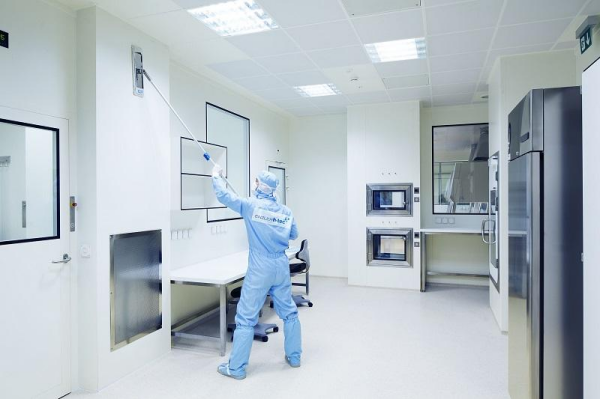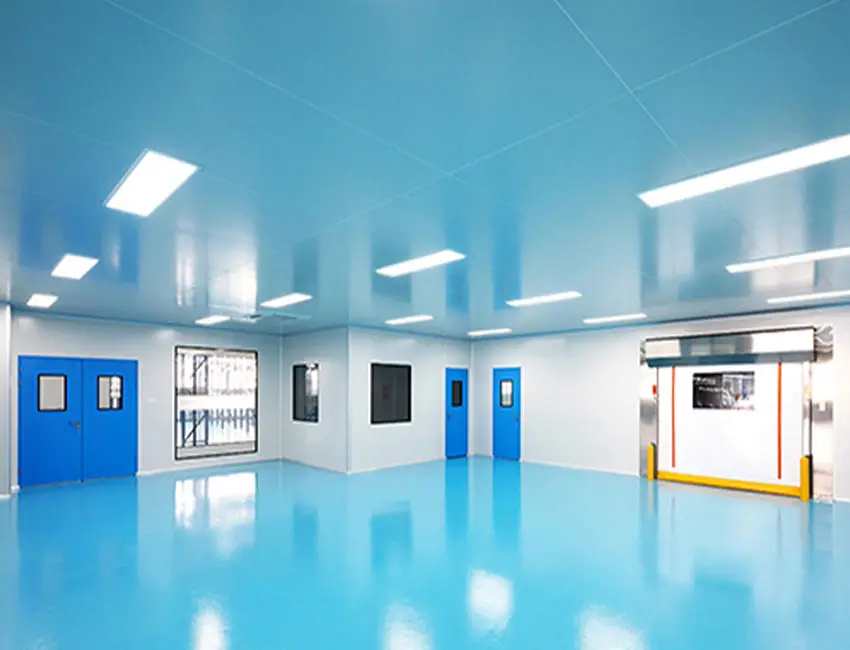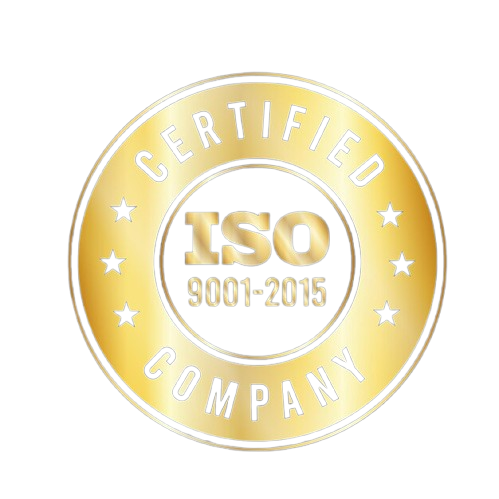Innovative Design for Industrial Cleanrooms: Meeting Demands for High Performance and Contamination Control
Industrial cleanrooms play a critical role in environments where contamination control is essential to ensure product quality, safety, and regulatory compliance. Industries such as pharmaceuticals, biotechnology, electronics, and aerospace depend on these cleanrooms to maintain strict cleanliness standards during sensitive manufacturing processes. To meet evolving industry demands, innovative design for industrial cleanrooms has become increasingly important, integrating advanced materials, modular construction, and automation for superior contamination control and operational efficiency.
This article will explore key design innovations for industrial cleanrooms, their benefits, and best practices for achieving a contamination-free environment.
The Need for Innovative Design in Industrial Cleanrooms
Industrial cleanrooms are controlled environments where airborne particles, temperature, humidity, and pressure are regulated to protect sensitive processes and products. With the rise in technological advancements and industry-specific demands, cleanroom design has evolved to accommodate new requirements such as:
- Increased Precision and Cleanliness: Stringent cleanliness standards are required to ensure high-quality outcomes in sectors like semiconductor manufacturing and pharmaceutical production.
- Enhanced Efficiency and Scalability: Modular and flexible designs support scalable cleanroom solutions, allowing for expansion as production grows.
- Sustainable Practices: Environmental sustainability is now a significant focus, with cleanrooms incorporating energy-efficient systems and sustainable materials.
By leveraging innovative design solutions, industrial cleanrooms can achieve the optimal balance between contamination control, efficiency, and sustainability.
Key Features of Innovative Industrial Cleanroom Design
Innovative industrial cleanroom design incorporates advanced materials, modular construction, automation, and real-time monitoring. Here are the key features that enhance contamination control and improve performance:
1. Modular Construction for Flexibility and Scalability
Modular cleanroom construction is an innovation that allows cleanrooms to be easily expanded, reconfigured, or relocated based on changing operational needs.
- Flexible Layouts: Modular panels allow for customizable layouts, providing flexibility in how different cleanroom zones are organized. This adaptability is crucial in industries where production needs evolve frequently.
- Quick Installation and Modification: Modular cleanrooms can be assembled quickly, minimizing production downtime and allowing for easy upgrades or expansions without disrupting operations.
- Cost-Effective and Sustainable: Modular construction reduces material waste, supports fast installation, and enables long-term scalability, offering a cost-effective and sustainable approach to cleanroom design.
Modular cleanroom solutions are highly beneficial in industries like pharmaceuticals and electronics, where production requirements may change frequently.
2. Advanced Air Filtration and Circulation Systems
Maintaining air purity is a cornerstone of cleanroom design, and advanced air filtration and circulation systems are essential for effective contamination control.
- HEPA and ULPA Filtration: High-Efficiency Particulate Air (HEPA) filters capture 99.97% of particles as small as 0.3 microns, while Ultra-Low Penetration Air (ULPA) filters trap even smaller particles. These filters are critical for achieving cleanroom standards in high-contamination-control environments.
- Laminar Flow and Turbulent Flow Systems: Laminar airflow systems direct filtered air in a straight path to prevent particles from settling on surfaces, ideal for critical areas requiring high cleanliness. Turbulent airflow, on the other hand, distributes filtered air evenly and is often used in lower-class cleanrooms.
- Automated Airflow Control: Airflow control systems automatically adjust based on cleanroom activity, maintaining optimal particle levels and supporting energy efficiency.
Using advanced air filtration and circulation ensures that industrial cleanrooms consistently meet cleanliness standards, providing a sterile environment for production processes.
3. Smart Environmental Control and Monitoring Systems
Real-time environmental control and monitoring technology allow cleanrooms to maintain precise temperature, humidity, and pressure levels.
- IoT-Enabled Monitoring Systems: Internet of Things (IoT) technology connects cleanroom monitoring systems to allow remote access and real-time monitoring of environmental conditions.
- Automated Data Logging: Monitoring systems with data logging capabilities store historical data on environmental conditions, which is essential for regulatory compliance and trend analysis.
- Automated Alerts: When environmental conditions deviate from set parameters, the system provides alerts, enabling immediate corrective action to prevent contamination.
Real-time monitoring ensures that any deviations in cleanliness standards are promptly addressed, keeping the cleanroom compliant and supporting consistent quality.
4. Energy-Efficient HVAC Systems
Energy-efficient HVAC (Heating, Ventilation, and Air Conditioning) systems help maintain optimal environmental conditions while reducing operational costs.
- Precision Temperature and Humidity Control: HVAC systems with advanced sensors ensure stable temperature and humidity levels, which are essential for contamination control.
- Variable Frequency Drives (VFDs): VFDs adjust the speed of HVAC fans, optimizing energy usage based on the current environmental requirements and reducing power consumption.
- HEPA-Filtered Recirculation Units: These units circulate clean, filtered air to maintain consistent air quality, supporting high performance with lower energy usage.
Energy-efficient HVAC systems benefit industries with high energy demands by lowering operational costs and reducing environmental impact.
5. Antimicrobial and Easy-to-Clean Materials
Using antimicrobial and easy-to-clean materials in cleanroom design supports strict cleanliness standards and minimizes contamination risks.
- Non-Porous Surfaces: Materials such as stainless steel and coated metals are non-porous, easy to clean, and resistant to bacterial growth.
- Antimicrobial Coatings: Coated surfaces reduce microbial activity, providing an added layer of protection against contamination.
- Seamless Panels: Modular panels with seamless joints prevent particle buildup, which is crucial for maintaining a contamination-free environment.
These materials are particularly useful in pharmaceutical and biotech cleanrooms, where even minor contamination can impact product safety.
6. Integration of Robotic and Automated Systems
Automation is a growing trend in industrial cleanrooms, with robotic systems used to perform tasks that reduce human involvement, lowering the risk of contamination.
- Automated Cleaning Systems: Robots equipped with HEPA filters and antimicrobial materials can autonomously clean floors and surfaces, ensuring cleanliness without introducing new contaminants.
- Material Handling Robots: Robotic systems transfer materials within the cleanroom, minimizing human contact and reducing contamination risk.
- Programmable Protocols: Robots can be programmed to perform specific tasks following cleanroom protocols, maintaining precision and consistency.
Automation enhances productivity while supporting contamination control, making it ideal for high-volume or high-sensitivity industries.
Best Practices for Designing Contamination-Free Industrial Cleanrooms
Incorporating best practices into the design of industrial cleanrooms ensures that facilities operate efficiently and maintain cleanliness standards. Here are some key practices:
1. Establish Clear Zoning and Workflow Design
Dividing the cleanroom into zones based on cleanliness levels prevents cross-contamination and optimizes workflows.
- Controlled Entry and Exit Points: Position gowning areas, air showers, and access points strategically to minimize contamination risks.
- Designated Areas for Different Processes: Separate activities based on their contamination sensitivity, with critical zones having stricter environmental controls.
- Efficient Material Flow: Plan the layout to streamline material movement, minimizing traffic in high-contamination-control zones.
Clear zoning supports contamination control, particularly in facilities handling sensitive materials or products.
2. Regular Inspection and Maintenance of Systems
Maintaining cleanliness requires regular inspection and maintenance of environmental control systems.
- Routine Filter Replacement: Replace HEPA and ULPA filters as needed to maintain optimal air quality.
- Scheduled HVAC and Monitoring System Maintenance: Calibrate HVAC and monitoring systems regularly to ensure accurate readings and consistent performance.
- Periodic Cleaning of Surfaces and Equipment: Use cleanroom-safe cleaning agents and non-shedding materials for routine cleaning of surfaces, ensuring compliance with cleanliness standards.
Scheduled maintenance keeps the cleanroom operating effectively and reduces the risk of contamination.
3. Implement Personnel Protocols for Cleanroom Entry and Gowning
Personnel are a significant source of contamination, making strict protocols essential.
- Comprehensive Gowning Protocols: Require personnel to wear cleanroom-specific attire, such as coveralls, masks, gloves, and shoe covers, to prevent particle shedding.
- Hand Hygiene and Decontamination: Personnel should follow handwashing protocols and use air showers before entering the cleanroom.
- Controlled Access: Limit access to essential personnel only, reducing the frequency of traffic and the risk of contamination.
By adhering to these personnel protocols, cleanrooms can maintain high standards of cleanliness and reduce contamination from human sources.
4. Use Data-Driven Insights for Continuous Improvement
Leverage environmental monitoring data to identify trends, troubleshoot issues, and optimize cleanroom operations.
- Analyze Environmental Trends: Use data from temperature, humidity, and particle monitoring to identify recurring issues and prevent potential contamination risks.
- Implement Corrective Actions Based on Data: Address deviations in environmental conditions proactively to maintain regulatory compliance.
- Support Regulatory Audits with Data: Data logging and reporting support compliance with industry regulations, providing documentation for audits and quality assurance.
Continuous improvement enables cleanrooms to adapt to evolving industry standards and maintain optimal performance.
Benefits of Innovative Industrial Cleanroom Design
Implementing innovative design elements in industrial cleanrooms offers numerous benefits that improve cleanliness, efficiency, and scalability. Key benefits include:
- Enhanced Contamination Control: Advanced air filtration, antimicrobial materials, and automated cleaning systems reduce contamination, ensuring high product quality.
- Operational Flexibility: Modular designs and robotic systems increase flexibility, allowing cleanrooms to scale and adapt to changing production needs.
- Reduced Operational Costs: Energy-efficient HVAC systems, automated monitoring, and robotic systems reduce energy consumption, labor, and maintenance costs.
- Regulatory Compliance: Compliance with ISO and GMP standards is easier to achieve with real-time monitoring, automated systems, and data logging, supporting quality assurance.
Why Choose Wise Link for Industrial Cleanroom Design Solutions
Wise Link specializes in providing innovative industrial cleanroom design solutions tailored to your industry’s unique requirements. We integrate advanced environmental control, modular construction, and automation to deliver cleanrooms that optimize contamination control, efficiency, and compliance.
- Customized Cleanroom Designs: We create solutions that meet specific cleanliness standards, supporting various industries, from pharmaceuticals to aerospace.
- Advanced Technologies and Materials: Our designs incorporate modular construction, IoT-enabled monitoring, and energy-efficient HVAC systems to enhance performance.
- Experienced Support and Maintenance: Wise Link provides expert support throughout the installation and maintenance process, ensuring long-lasting cleanroom integrity.
Building an Advanced Industrial Cleanroom for Optimal Performance
Innovative design is crucial for achieving and maintaining contamination-free conditions in industrial cleanrooms. By implementing modular layouts, advanced air filtration, real-time monitoring, and automation, cleanrooms can support high production standards, improve operational efficiency, and meet strict regulatory requirements.
If you’re planning a new cleanroom or looking to upgrade an existing one, Wise Link offers industry-leading solutions to meet your needs. Contact us today for a free consultation and custom quote to explore how our advanced industrial cleanroom designs can support your production goals.

Elevate Your Cleanroom Standards with Innovative Industrial Design
Optimize Contamination Control, Efficiency, and Compliance. Contact Wise Link Today for a Free Consultation and Custom Quote!




